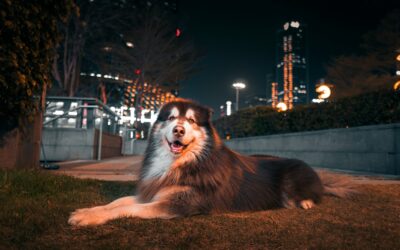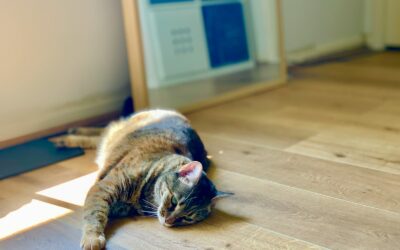Thinking about getting a hairless cat? Keep Reading!
The hairless cat, with its unique appearance and charming demeanor, has captured the hearts of pet lovers and cat enthusiasts worldwide. This distinctive breed, often known for its nearly naked look, offers a special experience for animal caregivers who are looking for a pet that stands out from the typical feline crowd.
The Intriguing World of Hairless Cats
Hairless cats, such as the well-known Sphynx CAT, are often surrounded by intrigue and curiosity. But what really makes these felines so enchanting?
Is it their soft, warm skin that feels like a heated peach to the touch? Or the fact that they are among the most social and affectionate breeds of cats? Some say that naturally occurring genetic mutation caused a cute, hairless kitty to be born,
Despite their somewhat alien appearance, a hairless kitten is known for their loving and playful nature. These cats form strong bonds with their humans, thriving on attention and interaction more so than many fur-covered counterparts.
It’s not unusual for a hairless cat to greet you at the door after a long day at work or snuggle up close on a cold night.

Caring for a Hairless Cat
While completely hairless cats do not have a fur coat to manage, this doesn’t mean they are low maintenance. In fact, their care requirements are quite specific, and potential adopters should be well-informed prior to bringing one home.
The absence of hair makes them prone to oily skin, so regular bathing is necessary to prevent any build-up that could lead to skin issues.
Moreover, hairless cats are sensitive to temperature extremes due to their lack of insulation. As an owner, you’ll need to ensure that your furred-less friend stays warm during the colder months and that they are protected from excessive sun exposure, which can cause damage to their exposed skin.
Understanding Hairless Cat Health Concerns
When it comes to health, hairless cats are a robust bunch, but they can be predisposed to certain conditions. It’s important to keep a keen eye on their diet to prevent obesity, which can be more pronounced in a cat without fur. A balanced diet and ample opportunities for exercise will help in maintaining their health and vitality.
Responsible breeding also plays a significant role in the health of hairless cats. Always do thorough research before purchasing a cat to ensure that you’re getting your new pet from a reputable source that engages in healthy breeding practices.
The Environmental Impact of Hairless Cat Breeding
As the popularity of hairless cats spikes, it’s vital to consider their breeding’s environmental impact. Ethical breeding not only ensures the health of the cats but also contributes to sustainability in the pet industry.
By choosing breeders who are dedicated to maintaining genetic diversity and preventing overbreeding, we can responsibly enjoy the companionship of these extraordinary pets.
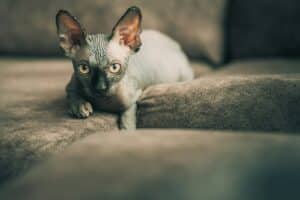
Hairless Cats as Companions
Hairless cats make for exceptional companions. Active and curious, they love being part of the family’s hustle and bustle.
These cats might enjoy a game of fetch or a puzzle toy just as much as a cozy nap on a warm lap. Their playful and inquisitive nature makes them perfect pets for households that will delight in their antics and can commit to their care.
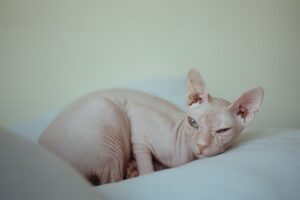
The Unique World of Hairless Cat Breeds
The animal kingdom is full of diverse and intriguing creatures, and the world of domestic cats is no different. Among the many furred felines that purr their way into our homes and hearts, there exists an unusual but fascinating subset – hairless cats.
These breeds offer a unique alternative for cat enthusiasts, especially those with allergies or a preference for less grooming. In this post, we’ll explore the various hairless cat breeds, their origins, care, and why they might just be the perfect pet for you.
Hairless Cat Breeds Around the Globe
Contrary to popular belief, there’s not just one type of hairless cat. Let’s meet some of the most popular hairless cat breeds worldwide.
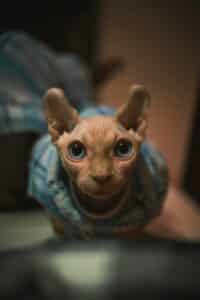
1. Sphynx Cats
Perhaps the most well-known of the hairless breeds, the Sphynx’s unique look is matched by its playful and affectionate personality. This breed is known for its wrinkled skin, large bat-like ears, and muscular body.
Despite their “naked” appearance, Sphynxes actually do have hair, but it’s more like peach fuzz. They originated in Canada in the 1960s and have since become a beloved breed for their outgoing nature and love of human company.
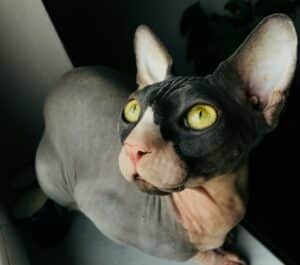
2. Peterbald
Originating from Russia and sharing similarities to the elegant Donskoy, the Peterbald features a slender physique and a distinctive head shape. These cats are known for being affectionate, intelligent, and social animals, making them great family pets. Some russian hairless cats may have a fine coat or balding that occurs over time, and their skin can come in various patterns and colors.
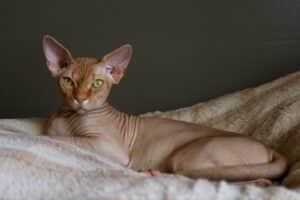
3. Donskoy
Also known as Don Sphynx Cats or the don hairless, this Russian breed was discovered in 1987. Unlike the Sphynx, which is hairless due to a recessive gene, the Donskoy sports his hairless look thanks to a dominant gene. They’re known not just for their bald beauty, but also for their loving and friendly demeanor.

4. Ukrainian Levkoy
With a distinct inward-fold of the ears and angular features quite unlike other hairless cats, the Ukrainian Levkoy is a newer breed developed by crossing Donskoys with Scottish Folds. These cats are known for being gentle and playful.
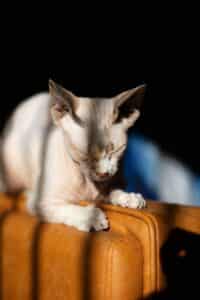
5. Bambino
A blend of the Sphynx and Munchkin breeds, the Bambino inherits hairlessness from the former and short legs from the latter. ‘Bambino’ means ‘baby’ in Italian, which is fitting given their kitten-like appearance throughout their lives. They’re known for their sweet and lively personalities.

More On Caring for a Hairless Cat
Caring for a hairless cat involves nuances not typically associated with their furry counterparts.
Skin Care for Hairless Cats
Without a layer of fur, hairless cats are exposed to various skin issues. Their skin can accumulate oils and they are prone to developing acne or dermatitis. Here are some tips to maintain healthy skin in your hairless cat:
-
Regular Baths: A weekly bath will help remove excess oil and prevent clogged pores. Use a gentle, cat-specific, or baby shampoo to avoid skin irritation.
-
Hydration: Keep their skin moisturized with a vet-recommended lotion to prevent dryness or flakiness.
-
Protection: Hairless cats are more susceptible to the sun’s harmful rays. Applying a small amount of pet-safe sunscreen can prevent sunburns when they bask in those cherished sunbeams.
-
Cleaning Wrinkles: Their distinct wrinkles can harbor dirt or sweat. Regularly wipe those areas with a soft, damp cloth to keep them clean.
Temperature Sensitivity
Without a coat to keep them warm, these cats are sensitive to cold temperatures. Consider providing cat sweaters or heated beds during cooler seasons.
A lack of fur also means that these cats have trouble maintaining body heat. Here’s how to keep your hairless kitty comfortable:
-
Warm Environment: Hairless cats appreciate a warm environment. Consider providing heated beds or thermal blankets, especially during cooler months.
-
Clothing: In cold weather, clothing can help retain body heat. Ensure any garments are soft and non-restrictive.
Nutrition and Health
Hairless cats have high metabolisms, meaning they’ll need more food compared to a furred feline:
-
High-Quality Diet: Opt for nutrient-rich cat foods that meet their energy requirements.
-
Frequent Meals: Smaller, more frequent meals can help balance their energy levels throughout the day.

Did you know that Kate’s K9 Pet Care provides pet supply delivery so you and your kitty are happy.
Hairless breeds are also prone to particular health issues, such as dental problems or hypertrophic cardiomyopathy (HCM). Regular veterinary check-ups are vital to ensure they remain in tip top shape.
Affection Needs
Many hairless cats, like the Sphynx, thrive on human interaction and need ample attention and affection.

Why Choose a Hairless Cat?
Allergy-Friendly
Are hairless cats hypoallergenic?
While no cat is entirely hypoallergenic, hairless cat breeds produce fewer allergens than their furry cousins, making them a better choice for allergy sufferers.
Less Grooming
No fur means no shedding, so hairless cat breeds can be ideal for those who’d rather not deal with the constant battle against pet hair.
Unique Companionship
Hairless cats often exude a strong personality and are known for their loyalty and love of human company.
Conversation Starters
Their distinctive appearance is sure to turn heads and start conversations wherever they go.

Conclusion: Embracing the Hairless Wonder
Hairless cats, with their unique appearance and affectionate nature, are an excellent choice for those looking for a feline companion that stands out from the rest. Whether you’re drawn to the playful antics of the Sphynx or the quiet elegance of the Peterbald, these breeds are sure to provide a distinctive and loving addition to any home.
Adopting a hairless cat is not just about welcoming a pet; it’s about bringing into your life a friend with an extraordinary story and a heart of gold. So, if you find yourself captivated by these peculiar beauties, know that you’re in for an enriching journey full of love, warmth, and the occasional need for sunscreen.
Remember to do thorough research and connect with reputable breeders or rescue shelters when considering adding any breed to your family. Each hairless cat offers an unforgettable presence, so embrace the distinctiveness and enjoy the company of one of nature’s most intriguing pets.2


